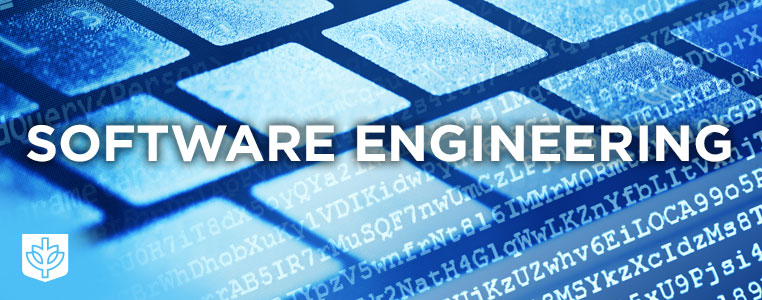Abstract: This white paper outlines a structured approach to enhancing software engineering skills, aligning with the ACM Software Engineering Curriculum. It emphasizes practical application, continuous learning, and exploration of key areas like open-source code analysis, design patterns, systems programming, debugging, and a balanced technology perspective. The paper integrates ACM knowledge areas and recommendations to provide a comprehensive roadmap for professional
White Paper: Elevating Your Software Engineering Skills: A Path to Mastery (Incorporating ACM Software Engineering Curriculum)
Abstract: This white paper outlines a structured approach to enhancing software engineering skills, aligning with the ACM Software Engineering Curriculum. It emphasizes practical application, continuous learning, and exploration of key areas like open-source code analysis, design patterns, systems programming, debugging, and a balanced technology perspective. The paper integrates ACM knowledge areas and recommendations to provide a comprehensive roadmap for professional development.
1. Introduction:
Software engineering is a dynamic field demanding continuous skill development. This white paper offers a structured path for engineers seeking mastery, blending practical experience with theoretical foundations, guided by the ACM Software Engineering Curriculum. It promotes a balanced approach, encouraging exploration of diverse technologies and paradigms.
2. Core Principles and Framework (Aligned with ACM Recommendations):
The ACM Software Engineering Curriculum provides a comprehensive framework for software engineering education and practice. This paper integrates its key knowledge areas and recommendations.
2.1 Software Engineering Foundations (ACM Knowledge Areas): The curriculum emphasizes fundamental knowledge areas:
- Software Requirements (ACM RE): Eliciting, analyzing, specifying, and validating requirements are crucial. Practical experience with techniques like use case modeling, user stories, and prototyping is essential. This directly supports the need for understanding requirements before diving into code.
- Software Design (ACM DS): Architectural, detailed, and UI design principles, patterns (GoF), and notations (UML) are emphasized. This aligns with the focus on design patterns in this paper.
- Software Construction (ACM CN): Coding, testing, and debugging skills are fundamental. Proficiency in languages, tools, and testing methodologies is key, complementing the focus on open-source analysis and systems programming.
- Software Testing (ACM TE): Various testing techniques (unit, integration, system, acceptance) and practical experience with testing frameworks are crucial for quality assurance.
- Software Maintenance (ACM MA): Understanding maintenance challenges (bug fixing, refactoring, upgrades) is essential. Analyzing open-source projects provides real-world insights.
- Software Process (ACM SP): Agile, Waterfall, and iterative development processes are covered. Understanding and applying these is crucial for project management.
- Software Quality (ACM SQ): Quality assurance techniques, code reviews, and static analysis are emphasized for building reliable software.
- Software Management (ACM SM): Project planning, scheduling, risk management, and team leadership are essential for successful project execution.
2.2 Practical Application and Skill Development:
- Open Source Code Analysis (Joomla/Drupal, Oscommerce/Magento): Analyzing open-source projects exposes engineers to real-world code, architectural patterns, coding conventions, and best practices, directly supporting the ACM's emphasis on practical application.
- Design Patterns (Gang of Four - GoF, Enterprise Architect): Applying GoF patterns with tools like Enterprise Architect enhances code maintainability, flexibility, and scalability, aligning with ACM's focus on design.
- Systems Programming (Linux/Sun, Sun Documentation, O'Reilly Networking Books): Understanding operating systems and networking is crucial for robust software, supporting ACM's emphasis on software construction and system-level understanding.
- Kernel Exploration (Linux Kernel Source Code): Exploring the kernel provides a deep understanding of OS internals, aligning with ACM's focus on foundational computer science.
- Systems Programming (Linux/Solaris): Hands-on systems programming experience is essential for high-performance applications, complementing ACM's focus on practical skills.
- Debugging (GDB): Mastering debugging is crucial for software construction and maintenance, supporting ACM's focus on testing and quality.
- Balanced Technology Perspective (.NET): Exploring diverse technologies broadens horizons and enhances problem-solving, aligning with ACM's encouragement of a broad understanding.
- Continuous Learning (University Libraries, Google Research/Scholar): Continuous learning is essential for staying current, supporting ACM's emphasis on lifelong learning.
3. Use Cases (Expanded with ACM Context):
- Requirements Engineering: Using use case diagrams and user stories to capture requirements for a web application (ACM RE).
- Software Design: Applying the Singleton pattern to manage database connections in a Java application (ACM DS).
- Software Construction: Implementing a sorting algorithm in Python, following coding best practices (ACM CN).
- Software Testing: Writing unit tests for a Java class using JUnit (ACM TE).
- Software Maintenance: Refactoring legacy code to improve readability and maintainability (ACM MA).
- Software Process: Applying the Scrum framework to manage a software project (ACM SP).
- Software Quality: Performing code reviews and static analysis to identify potential defects (ACM SQ).
- Software Management: Creating a project plan and tracking progress using project management software (ACM SM).
- Performance Optimization: Analyzing network traffic to identify bottlenecks in a distributed system (combining multiple ACM areas).
- Security Implementation: Implementing secure coding practices to prevent common vulnerabilities (combining multiple ACM areas).
4. References (Expanded with ACM Resources):
- Gamma, E., Helm, R., Johnson, R., & Vlissides, J. (1995). Design Patterns. Addison-Wesley.
- The Linux Kernel. kernel.org
- GNU Project Debugger (GDB). gnu.org/software/gdb/
- Oracle Solaris Documentation. oracle.com/solaris
- O'Reilly Media Networking Books. (Specific titles/authors needed)
- Joomla CMS. joomla.org
- Drupal CMS. drupal.org
- Magento. magento.com
- osCommerce. oscommerce.com
- ACM Software Engineering Curriculum. acm.org (Link to specific curriculum document)
- Software Engineering 2004 (SE2004). (If referencing a specific version)
- IEEE Software Engineering Body of Knowledge (SWEBOK). (If relevant)
- ACM SIGSOFT. sigsoft.acm.org
5. Conclusion:
Mastering software engineering is a continuous journey. This white paper, aligned with the ACM Software Engineering Curriculum, provides a roadmap for skill enhancement. By combining practical application, continuous learning, and engagement with the ACM community, software engineers can achieve professional growth and contribute meaningfully to the field. Embracing lifelong learning and adapting to evolving technologies are crucial for long-term success.
